Services
NanoEnviCz integrates the infrastructure facilities of Czech research organizations for research in nanotechnology sciences. The program is focused on research in the field of nanomaterials and nanocomposites for environmental and related applications. Services include controllable syntheses of nanomaterials, their complex chemical, structural, morphological and surface characterization, tuning their functional properties, monitoring their potential toxicity and hazard.
If this option is selected, ReMade will work with NanoEnviCz to assign the most appropriate facility for your proposal.
Applicants are encouraged to select at least 2 techniques from the choices available at the same or different facilities.
For advice on techniques or participating facilities before submitting a proposal, talk to our Expert Network at sciencesupport@remade-project.eu and/or submit a pre-proposal using the Call link in the top navigation bar.

Request Access to (1) ReMade-TNA Standard Access:
Request Access to (2) ReMade-SME Service Access:
In the field of electron microscopy electrons are used to visualize and analyze the structure, morphology and composition of a sample at an atomic level achieving a resolution up to 50 pm. Usually, either with a "parallel" electron beam or scanned with an electron probe an atomic-level understanding of structures, properties and fundamental mechanisms in structural, functional and electronic materials can be gained.
Applicants are encouraged to select at least 2 techniques from the choices available at the same or different facilities.
For advice on techniques or participating facilities before submitting a proposal, talk to our Expert Network at sciencesupport@remade-project.eu and/or submit a pre-proposal using the Call link in the top navigation bar.
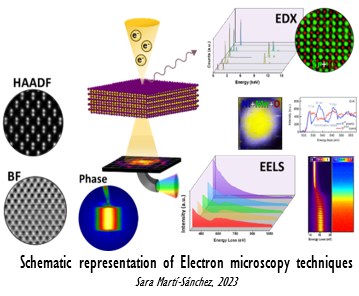
Request Access to (1) ReMade-TNA Standard Access:
Request Access to (2) ReMade-SME Service Access:
The focused ion beam (FIB) technique is a high-resolution imaging and microfabrication technology that uses a focused beam of ions to selectively remove or deposit material at the nanoscale level. FIB instruments are typically based on a scanning electron microscope (SEM) to visualize the sample and a focused beam of gallium ions to precisely remove or deposit material.
Applicants are encouraged to select at least 2 techniques from the choices available at the same or different facilities.
For advice on techniques or participating facilities before submitting a proposal, talk to our Expert Network at sciencesupport@remade-project.eu and/or submit a pre-proposal using the Call link in the top navigation bar.
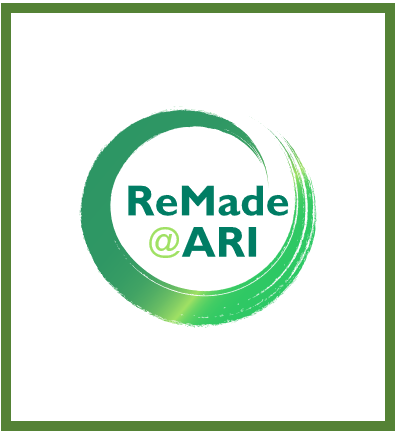
Request Access to (1) ReMade-TNA Standard Access:
Request Access to (2) ReMade-SME Service Access:
The application of high magnetic fields allows a controlled tuning of the physical properties of bulk and thin film material samples. The electronic or lattice magneto response can be investigated by various experimental techniques. This is suitable for characterising new materials with hard magnetic properties for electric motor technology, or with pronounced magnetocaloric properties for applications in cooling technology.
Applicants are encouraged to select at least 2 techniques from the choices available at the same or different facilities.
For advice on techniques or participating facilities before submitting a proposal, talk to our Expert Network at sciencesupport@remade-project.eu and/or submit a pre-proposal using the Call link in the top navigation bar.

Request Access to (1) ReMade-TNA Standard Access:
Ion beam analysis (IBA) is a family of analytical techniques based on the interaction of energetic ions with the target atoms in the substrate enabling elemental quantification, compositional analysis, elemental depth profiling, and crystallographic analysis. The incident ions are typically in MeV energy range and the interaction can range from elastic scattering, recoil scattering, nuclear reaction, and X-ray emission.
Applicants are encouraged to select at least 2 techniques from the choices available at the same or different facilities.
For advice on techniques or participating facilities before submitting a proposal, talk to our Expert Network at sciencesupport@remade-project.eu and/or submit a pre-proposal using the Call link in the top navigation bar.
INDUSTRIAL USERS: you may select CMAM below to access other Radiate facilities on specific request.
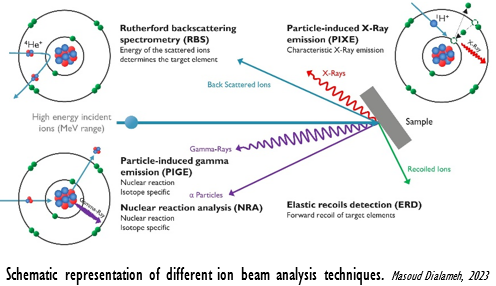
Request Access to (1) ReMade-TNA Standard Access:
Request Access to (2) ReMade-SME Service Access:
Ion beam composition mapping and imaging provides two-dimensional visualization of a sample. Images are obtained by recording effects of the interaction between matter and the ion beam. Common techniques are Particle Induced X-ray Emission or Gamma -Ray Emission (PIXE,PIGE), Scanning Transmission Ion Microscopy, and Ion Beam Induced Charge Measurements.
Applicants are encouraged to select at least 2 techniques from the choices available at the same or different facilities.
For advice on techniques or participating facilities before submitting a proposal, talk to our Expert Network at sciencesupport@remade-project.eu and/or submit a pre-proposal using the Call link in the top navigation bar.
INDUSTRIAL USERS: you may select CMAM below to access other Radiate facilities on specific request.
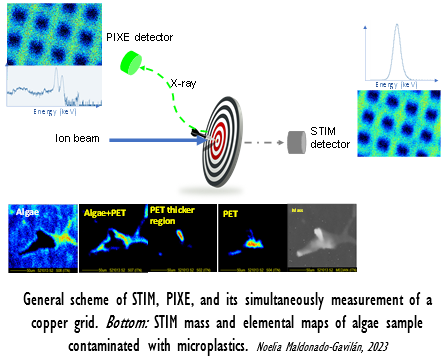
Request Access to (1) ReMade-TNA Standard Access:
Request Access to (2) ReMade-SME Service Access:
Ion beams have been for the past decades used routinely to modify and study the structure and properties of metals, insulators and semiconductors. Making use of different ion-target interactions, either by nuclear collisions or electronic excitations, ion beams are used to introduce dopants and defects, create nano-patterns, grow layered structures, and conduct degradation studies.
Applicants are encouraged to select at least 2 techniques from the choices available at the same or different facilities.
For advice on techniques or participating facilities before submitting a proposal, talk to our Expert Network at sciencesupport@remade-project.eu and/or submit a pre-proposal using the Call link in the top navigation bar.
INDUSTRIAL USERS: you may select CMAM below to access other Radiate facilities on specific request.
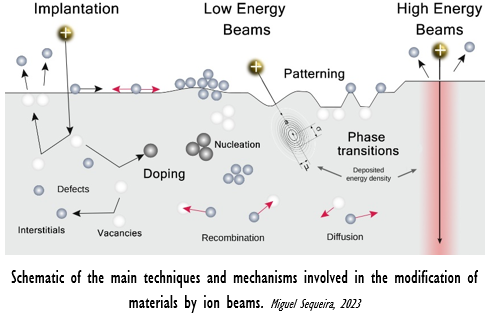
Request Access to (1) ReMade-TNA Standard Access:
Request Access to (2) ReMade-SME Service Access:
Laser photo chemistry and spectroscopy includes a plethora of laser-based techniques to promote and probe chemical and physical events. Several steady-state and time-resolved spectroscopic techniques are available covering wide ranges of energy and time, applying a multitude of specialized sampling techniques.
Applicants are encouraged to select at least 2 techniques from the choices available at the same or different facilities.
For advice on techniques or participating facilities before submitting a proposal, talk to our Expert Network at sciencesupport@remade-project.eu and/or submit a pre-proposal using the Call link in the top navigation bar.

Request Access to (1) ReMade-TNA Standard Access:
Request Access to (2) ReMade-SME Service Access:
Laser processing is primarily focused on surface material modification, testing and assessment. Often ultra-short laser pulses are utilized for treatment of various materials. Available services are not limited on damage testing and processing itself, but include general laser ablation field and related phenomena.
Applicants are encouraged to select at least 2 techniques from the choices available at the same or different facilities.
For advice on techniques or participating facilities before submitting a proposal, talk to our Expert Network at sciencesupport@remade-project.eu and/or submit a pre-proposal using the Call link in the top navigation bar.
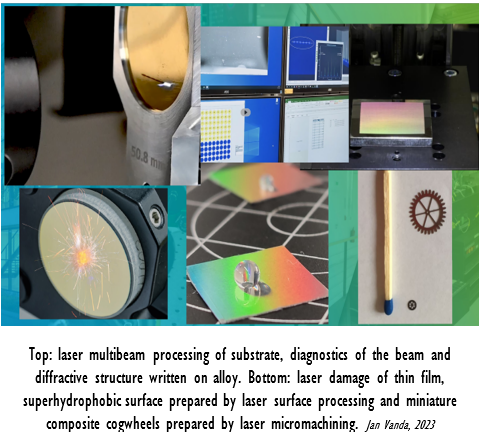
Request Access to (1) ReMade-TNA Standard Access:
Request Access to (2) ReMade-SME Service Access:
IMPORTANT: ACCESS TO ISIS IS LIMITED Proposals requiring environments ONLY available at ISIS will be considered. All other requests will be transferred to infrastructures with similar facilities. Please contact the "Smart Science Cluster" for more information and support (sciencesupport@remade-project.eu).
Muons are short-lived heavy versions of the electron. Fully spin-polarised muons are implanted into materials where they sense the local magnetic fields and the polarisation of the muon ensemble responds to these. This makes muons extremely sensitive to magnetism and superconductivity effects. They can also be used to study ionic diffusion, e.g. in battery materials, and can be used as mimics of isolated hydrogen to investigate hydrogen behaviour in materials.
Applicants are encouraged to select at least 2 techniques from the choices available at the same or different facilities.
For advice on techniques or participating facilities before submitting a proposal, talk to our Expert Network at sciencesupport@remade-project.eu and/or submit a pre-proposal using the Call link in the top navigation bar.
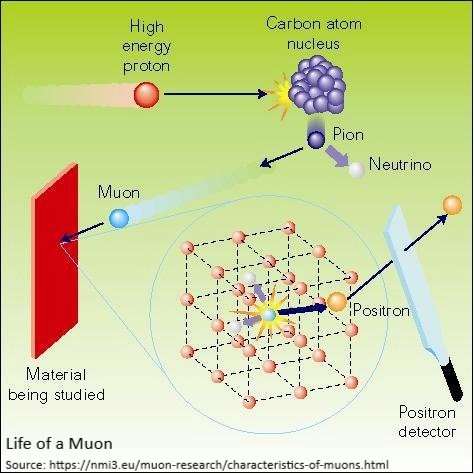
Request Access to (1) ReMade-TNA Standard Access:
Request Access to (2) ReMade-SME Service Access:
IMPORTANT: ACCESS TO ISIS IS LIMITED Proposals requiring environments ONLY available at ISIS will be considered. All other requests will be transferred to infrastructures with similar facilities. Please contact the "Smart Science Cluster" for more information and support (sciencesupport@remade-project.eu).
Neutron diffraction reveals structural information on the arrangement of atoms and magnetic moments in condensed matter. Single-crystal diffraction provides the most precise and detailed information but requires crystal samples of suitable quality and size. Otherwise samples exist in a form in which some of the structural information is spatially averaged and the corresponding experimental technique generically referred to as ‘powder diffraction’.
Applicants are encouraged to select at least 2 techniques from the choices available at the same or different facilities.
For advice on techniques or participating facilities before submitting a proposal, talk to our Expert Network at sciencesupport@remade-project.eu and/or submit a pre-proposal using the Call link in the top navigation bar.
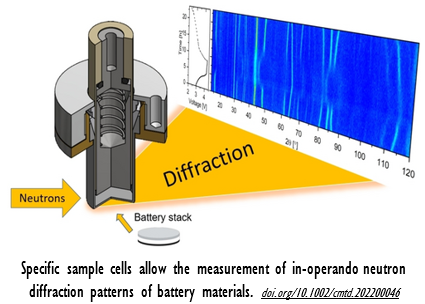
Request Access to (1) ReMade-TNA Standard Access:
Request Access to (2) ReMade-SME Service Access:
IMPORTANT: ACCESS TO ISIS IS LIMITED Proposals requiring environments ONLY available at ISIS will be considered. All other requests will be transferred to infrastructures with similar facilities. Please contact the "Smart Science Cluster" for more information and support (sciencesupport@remade-project.eu).
Neutron imaging is a non-destructive technique that can see inside materials and examine processes therein. High resolution imaging by grating interferometry is sensitive down to the micro-meter scale, polarised neutron imaging reveals magnetic domains and textures. Monochromatic imaging enhances element specific contrasts. The high sensitivity to hydrogen containing materials reveals even small contaminations.
Applicants are encouraged to select at least 2 techniques from the choices available at the same or different facilities.
For advice on techniques or participating facilities before submitting a proposal, talk to our Expert Network at sciencesupport@remade-project.eu and/or submit a pre-proposal using the Call link in the top navigation bar.
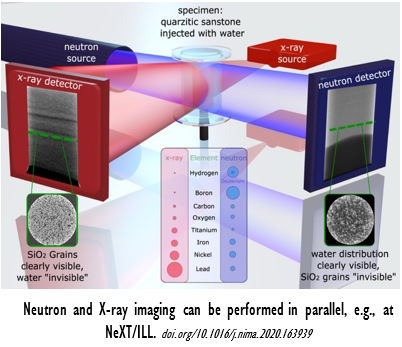
Request Access to (1) ReMade-TNA Standard Access:
Request Access to (2) ReMade-SME Service Access:
IMPORTANT: ACCESS TO ISIS IS LIMITED Proposals requiring environments ONLY available at ISIS will be considered. All other requests will be transferred to infrastructures with similar facilities. Please contact the "Smart Science Cluster" for more information and support (sciencesupport@remade-project.eu).
Neutron reflectometry gives information on the structure of thin films (depth-dependent composition) and of solid surfaces. It is also a powerful technique to study solid/solid, solid/liquid, liquid/liquid and liquid/air interfaces.
Applicants are encouraged to select at least 2 techniques from the choices available at the same or different facilities.
For advice on techniques or participating facilities before submitting a proposal, talk to our Expert Network at sciencesupport@remade-project.eu and/or submit a pre-proposal using the Call link in the top navigation bar.
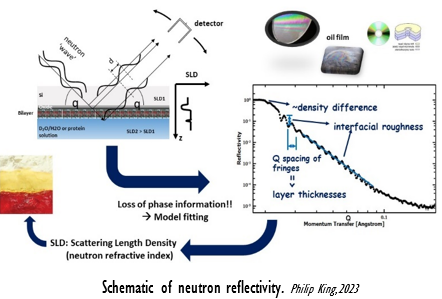
Request Access to (1) ReMade-TNA Standard Access:
Request Access to (2) ReMade-SME Service Access:
IMPORTANT: ACCESS TO ISIS IS LIMITED Proposals requiring environments ONLY available at ISIS will be considered. All other requests will be transferred to infrastructures with similar facilities. Please contact the "Smart Science Cluster" for more information and support (sciencesupport@remade-project.eu).
Small-angle scattering does not attempt to see atoms but is interested in the organisation of particles in dispersed systems. It explores the meso-structures of liquids and solids on length scales ranging from 1 nanometer to about a micron. Scattering properties of isotopes with neutrons can differ vastly, which allows to turn specific parts of the sample visible or invisible.
Applicants are encouraged to select at least 2 techniques from the choices available at the same or different facilities.
For advice on techniques or participating facilities before submitting a proposal, talk to our Expert Network at sciencesupport@remade-project.eu and/or submit a pre-proposal using the Call link in the top navigation bar.
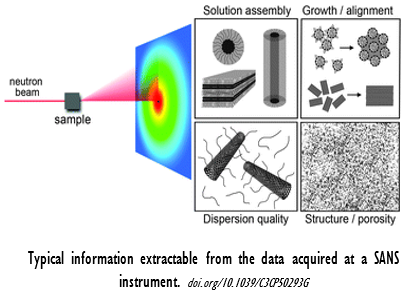
Request Access to (1) ReMade-TNA Standard Access:
Request Access to (2) ReMade-SME Service Access:
IMPORTANT: ACCESS TO ISIS IS LIMITED Proposals requiring environments ONLY available at ISIS will be considered. All other requests will be transferred to infrastructures with similar facilities. Please contact the "Smart Science Cluster" for more information and support (sciencesupport@remade-project.eu).
Neutron spectroscopy probes the dynamics of magnetic moments, molecules or atom lattices over length scales ranging from fractions of a nanometer to tens of nanometers, and over timescales from tens of femtoseconds up to the microsecond.
Applicants are encouraged to select at least 2 techniques from the choices available at the same or different facilities.
For advice on techniques or participating facilities before submitting a proposal, talk to our Expert Network at sciencesupport@remade-project.eu and/or submit a pre-proposal using the Call link in the top navigation bar.
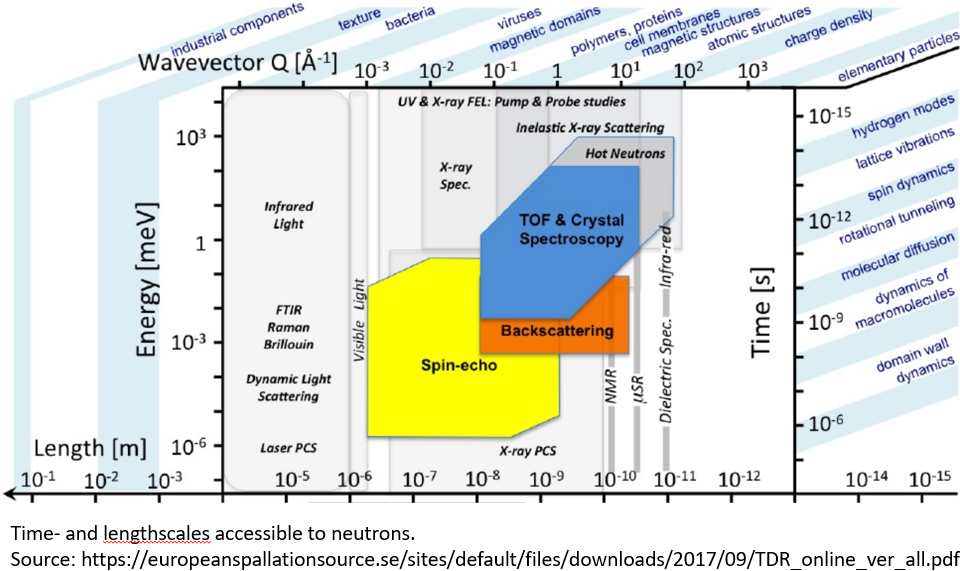
Request Access to (1) ReMade-TNA Standard Access:
Request Access to (2) ReMade-SME Service Access:
Neutron activation analysis methods use the neutron-induced transient radioactivity or nuclear reactions to obtain information on the elemental composition of samples. These techniques are non-destructive, bulk-representative, applicable to materials where “exotic” elements (such as light elements (H, B, Cl, S), valuable noble metals, rare-earth elements, environmentally-relevant heavy metals) are to be quantified, if the material is not soluble, or where standard reference material are unavailable.
Applicants are encouraged to select at least 2 techniques from the choices available at the same or different facilities.
For advice on techniques or participating facilities before submitting a proposal, talk to our Expert Network at sciencesupport@remade-project.eu and/or submit a pre-proposal using the Call link in the top navigation bar.

Request Access to (1) ReMade-TNA Standard Access:
Request Access to (2) ReMade-SME Service Access:
NMR is an abbreviation for Nuclear Magnetic Resonance. With little required sample preparation, molecular structures on the atomic level can be analysed in a non-destructive fashion. NMR spectroscopy provides information on the structures, as well as the dynamics of various biological and synthetic molecules, making it a versatile tool to study liquid, solid and semi-liquid samples. Fields of application include bio, foods, chemistry, as well as new ones such as batteries.
Applicants are encouraged to select at least 2 techniques from the choices available at the same or different facilities.
For advice on techniques or participating facilities before submitting a proposal, talk to our Expert Network at sciencesupport@remade-project.eu and/or submit a pre-proposal using the Call link in the top navigation bar.

Request Access to (2) ReMade-SME Service Access:
Being the anti-particle of electrons, positrons are used to probe material defects on the atomic scale, at low concentrations and with high sensitivity. It is a non-destructive method that has been developed as a proven tool for the study of metals, semiconductors, polymers, and open or closed microporous systems.
Applicants are encouraged to select at least 2 techniques from the choices available at the same or different facilities.
For advice on techniques or participating facilities before submitting a proposal, talk to our Expert Network at sciencesupport@remade-project.eu and/or submit a pre-proposal using the Call link in the top navigation bar.
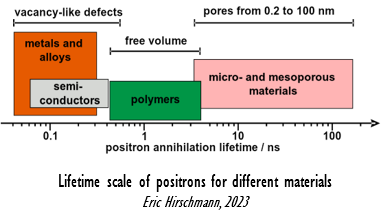
Request Access to (1) ReMade-TNA Standard Access:
Request Access to (2) ReMade-SME Service Access:
Small- and wide-angle x-ray scattering (SAXS/WAXS) probe the size, shape, orientation, and crystallinity of mesoscale structures on length scales ranging from about one to several hundred nanometers. The techniques can be applied to solids, liquids, and dispersions in both bulk and, with restrictions, thin films.
Applicants are encouraged to select at least 2 techniques from the choices available at the same or different facilities.
For advice on techniques or participating facilities before submitting a proposal, talk to our Expert Network at sciencesupport@remade-project.eu and/or submit a pre-proposal using the Call link in the top navigation bar.
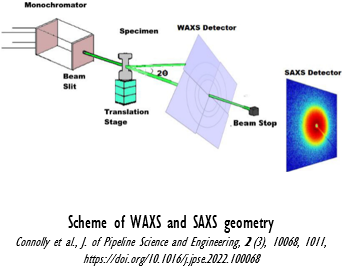
Request Access to (1) ReMade-TNA Standard Access:
Request Access to (2) ReMade-SME Service Access:
X-ray diffraction (XRD) enables the identification of crystalline materials by their atomic structure. Through the analysis of the XRD data, one can retrieve the different phase(s) in the sample from the peaks position, while the intensities of the peaks provide information about the quantity of each crystalline phase present in the sample. Finally, the analysis of the peak broadening provides insights into the crystallite size and micro-strain in the crystal.
Applicants are encouraged to select at least 2 techniques from the choices available at the same or different facilities.
For advice on techniques or participating facilities before submitting a proposal, talk to our Expert Network at sciencesupport@remade-project.eu and/or submit a pre-proposal using the Call link in the top navigation bar.
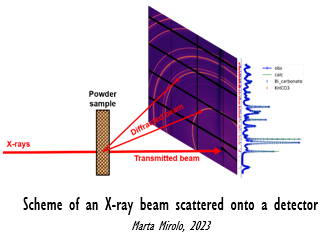
Request Access to (1) ReMade-TNA Standard Access:
Request Access to (2) ReMade-SME Service Access:
X-ray imaging refers to the set of techniques that provide two-dimensional visualizations of a sample. Images are obtained by recording one or more effects of the interaction between matter and X-rays. Emission of electrons or X-ray photons, absorption or diffraction of the impinging beam, creation of free charge carriers are some of these effects and can be used as a contrast mechanism for image formation.
Applicants are encouraged to select at least 2 techniques from the choices available at the same or different facilities.
For advice on techniques or participating facilities before submitting a proposal, talk to our Expert Network at sciencesupport@remade-project.eu and/or submit a pre-proposal using the Call link in the top navigation bar.

Request Access to (1) ReMade-TNA Standard Access:
Request Access to (2) ReMade-SME Service Access:
X-ray spectroscopy is sensitive to the local atomic and electronic structure around the element of interest. This element selective technique has versatile applications for solid, liquid and even gaseous materials, including time-resolved in situ studies.
Applicants are encouraged to select at least 2 techniques from the choices available at the same or different facilities.
For advice on techniques or participating facilities before submitting a proposal, talk to our Expert Network at sciencesupport@remade-project.eu and/or submit a pre-proposal using the Call link in the top navigation bar.

Request Access to (1) ReMade-TNA Standard Access:
Request Access to (2) ReMade-SME Service Access:
X-ray tomography is a non-destructive full-field imaging technique applicable to materials from metals to organic tissue. A tomographic dataset is collected by rotating the sample in the X-ray beam and collecting a series of projections from different angles. The series of collected projections are fed into a reconstruction algorithm to produce a three-dimensional volume representation of electron density in the sample.
Applicants are encouraged to select at least 2 techniques from the choices available at the same or different facilities.
For advice on techniques or participating facilities before submitting a proposal, talk to our Expert Network at sciencesupport@remade-project.eu and/or submit a pre-proposal using the Call link in the top navigation bar.

Request Access to (1) ReMade-TNA Standard Access:
Request Access to (2) ReMade-SME Service Access:
ARIA
For more information about ARIA, please visit: https://aria.services.
Getting started with ARIA:
In both cases below, you will be asked to log in or to create an account, if you haven't already done so.
To apply to one of the services to the left, either:
- Click on the drop down for the service type you are interested in and then click on the link of the specific service. This will automatically start a proposal submission to that service.
- Click on the "Request Access" button in the top left of the page, you will then be able to add the service (/services) you would like to apply to, through the proposal submission process.